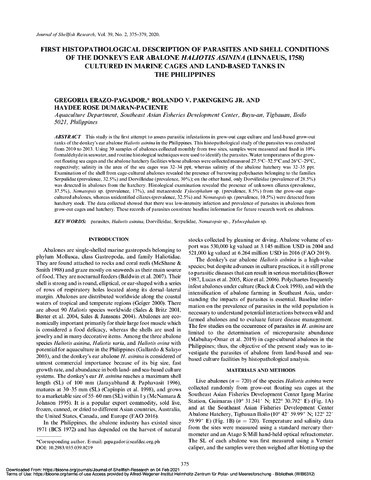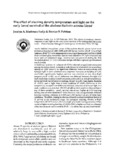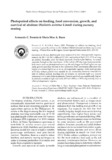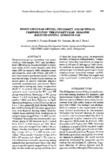First histopathological description of parasites and shell conditions of the donkey's ear abalone Haliotis asinina (Linnaeus, 1758) cultured in marine cages and land-based tanks in the Philippines

View/Open
Date
2020-08-26Page views
450Metadata
Show full item recordCited times in Scopus
- Citations
- Scopus - Citation Indexes: 2
- Captures
- Mendeley - Readers: 5
Share
Abstract
This study is the first attempt to assess parasitic infestations in grow-out cage culture and land-based grow-out tanks of the donkey's ear abalone Haliotis asinina in the Philippines. This histopathological study of the parasites was conducted from 2010 to 2013. Using 30 samples of abalones collected monthly from two sites, samples were measured and fixed in 10% formaldehyde in seawater, and routine histological techniques were used to identify the parasites. Water temperatures of the grow-out floating sea cages and the abalone hatchery facilities whose abalones were collected measured 27.5°C–32.5°C and 26°C–29°C, respectively; salinity in the area of the sea cages was 32–34 ppt, whereas salinity of the abalone hatchery was 32–35 ppt. Examination of the shell from cage-cultured abalones revealed the presence of burrowing polychaetes belonging to the families Serpulidae (prevalence, 32.5%) and Dorvilleidae (prevalence, 30%); on the other hand, only Dorvilleidae (prevalence of 28.5%) was detected in abalones from the hatchery. Histological examination revealed the presence of unknown ciliates (prevalence, 37.5%), Nematopsis sp. (prevalence, 17%), and metacestode Tylocephalum sp. (prevalence, 8.5%) from the grow-out cage-cultured abalones, whereas unidentified ciliates (prevalence, 32.5%) and Nematopsis sp. (prevalence, 10.5%) were detected from hatchery stock. The data collected showed that there was low-intensity infection and prevalence of parasites in abalones from grow-out cages and hatchery. These records of parasites constitute baseline information for future research work on abalones.
Suggested Citation
Erazo-Pagador, G., Pakingking, R. V., Jr., & Dumaran-Paciente, H. R. (2020). First histopathological description of parasites and shell conditions of the donkey's ear abalone Haliotis asinina (Linnaeus, 1758) cultured in marine cages and land-based tanks in the Philippines. Journal of Shellfish Research , 39(2), 375-379. https://doi.org/10.2983/035.039.0219
Subject
Taxonomic term
Collections
- AQD Journal Articles [1248]
Related items
Showing items related by title, author, creator and subject.
-
The effect of stocking density, temperature and light on the early larval survival of the abalone Haliotis asinina Linné
Madrones-Ladja, Jocelyn A.; Polohan, Bernice B. (Phuket Marine Biological Center, 2001)Newly hatched trocophore larvae of the abalone haliotis asinina linne were stocked at densities of 1000, 3000 and 5000 larvae/1 at low (20-25oC) and high (ambien, 28-30oC) water temperature levels in ... -
Photoperiod effects on feeding, food conversion, growth, and survival of abalone (Haliotis asinina Linne) during nursery rearing
Fermin, Armando C.; Buen Shela Mae A. (Phuket Marine Biological Center, 2001)Juveniles of Haliotis asinina, 10 mm shell length were subjected to four photoperiodic regimes namely, 6L:18D, OL:24D, diffused 12:12D, and ambient light (12L:12D) serving as control. Juveniles were fed fresh seaweed, ... -
Spontaneous spawning, fecundity and spawning periodicity in the donkey's ear abalone Haliotis asinina Linnaeus 1758
Fermin, Armando C.; Gapasin, Rolando S.J.; Teruel, Myrna B. (Phuket Marine Biological Center; Phuket Marine Biological Center Special Publication 21(1), 2000)Spontaneous group spawning was monitored in wild-caught (WC) and hatchery-bred (HB) abalone broodstock (Haliotis asinina) held in duplicate tanks at 1:3 (male: female) ratio from June 1997 to January 1999. Abalone ...




